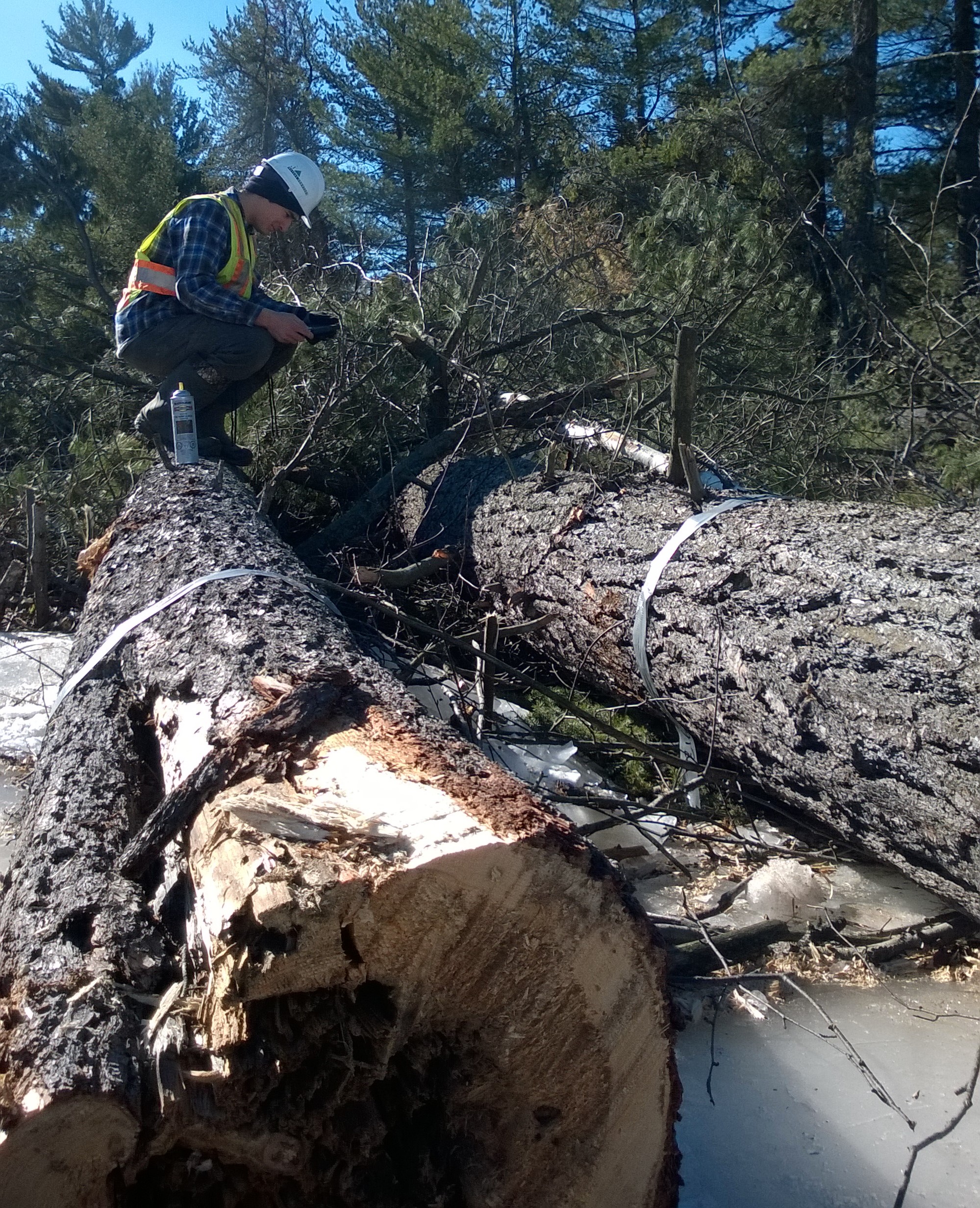Winter Visitor
I’m reminded on these cold winter nights of an unexpected visitor a few years ago. It was late January, a chilly -30oC outside. Scratching sounds in the cold air return prompted me to get off the couch and investigate. Our resident feline beat me to it; she sat staring at the vent cover. My first thought was that a mouse had somehow found it’s way in the house trying to get out of the cold.
Crouching down to get a better look, I was surprised to see that my suspected mouse had wings! A bat was huddled in the cold air return. It was no larger than a mouse, but had dark brown fur and wings.
Flying Mammals
Bats are the only mammal capable of true flight. These extraordinary animals spend summers roosting in trees, buildings and other structures during the day, and eating insects at night. The are active in the summer months, and hibernate from approximately mid September through late-April.
Ontario has eight bat species; three of them – Hoary Bat, Silver-haired Bat and Eastern Red Bat - head south for the winter while the other five – Little Brown Myotis, Northern Myotis, Eastern Small-footed Bat, Tri-colored Bat and Big Brown Bat – stick around for the deep freeze.
Hibernation, loosely defined, refers to a state of reduced activity which includes lower body temperature, metabolic rate, heart rate, and breathing in mammals and other endotherms.[1] Bats spend from late fall through early spring hibernating; usually in caves and abandoned mines.
Bats in Ontario and most of North America are experiencing sudden and dramatic population declines because of a fungus that is infecting their winter roosts. Bats are long-lived and have very low reproductive rates, typically 1 pup per year for those species most impacted by white nose syndrome.
This long-lived life history makes bats especially susceptible to diseases like white-nose which are so quick to infect and kill. The five species that hibernate in Ontario’s caves and mines are among the hardest hit.
White Nose Syndrome
White Nose Syndrome is a disease caused by the fungus Pseudogymnoascus destructans or Pd. It is killing hibernating cave bats at an alarming rate – some wintering sites have experienced losses of 100%. The fungus is not native to North America and thrives in environments with above-freezing, cool temperatures and high humidity - the same conditions found in winter roosts.
The fungus itself does not kill bats. It’s a combination of coincident timing and long cold winters which make it lethal. The fungus thrives in conditions found in hibernacula when bats are using them, usually from September through April for most species.
In the absence of the fungus, bats will roost all winter, waking once every 6 – 8 weeks to defecate and get a drink. This period of very low activity allows bats to subsist the entire winter - which can be 6 or 7 months depending on the location of the hibernacula - without eating.
Bats are clean mammals and they regularly groom their fur during the active season. White nose syndrome causes a visible skin infection, with mycelia (fungal threads) growing on the muzzles, wings and ears of bats.
The fungus interferes with water balance and the bat’s ability to thermoregulate. Bats engage in cleaning and other behaviour which uses critical fat reserves. Sometimes infected bats are observed flying in mid-winter, presumably searching for water or insects. Each waking uses up precious fat stores; bats infected with Pd usually succumb to death by dehydration, starvation or hypothermia.[2]
Light at the End of the Hibernacula
There is hope.
Have a look at the ground-breaking work by Dr. Chris Cornelison and his colleagues at Kennesaw State University’s BioInnovation Laboratory.
http://bioinnovation.kennesaw.edu/
Here in Canada, at the University of Winnipeg’s Willis Bat Lab, under the direction of Dr. Craig Willis, is conducting research which suggests that heated bat houses may increase the survival and reproductive rates of bats that survive the winter with WNS.
Right here in Northern Ontario, FRi Ecological Services uses state-of-the-art acoustic monitoring equipment to conduct in-person and remote surveys of bats and bat habitat. We’re involved with several projects to better understand bat species presence and habitat use in northern Ontario.

[1] https://en.wikipedia.org/wiki/Hibernation
[2] The Woodland Observer, January 2017. R. Geauvreau. Nipissing Naturalists Club. It All Started with a Bat House. 8pp.